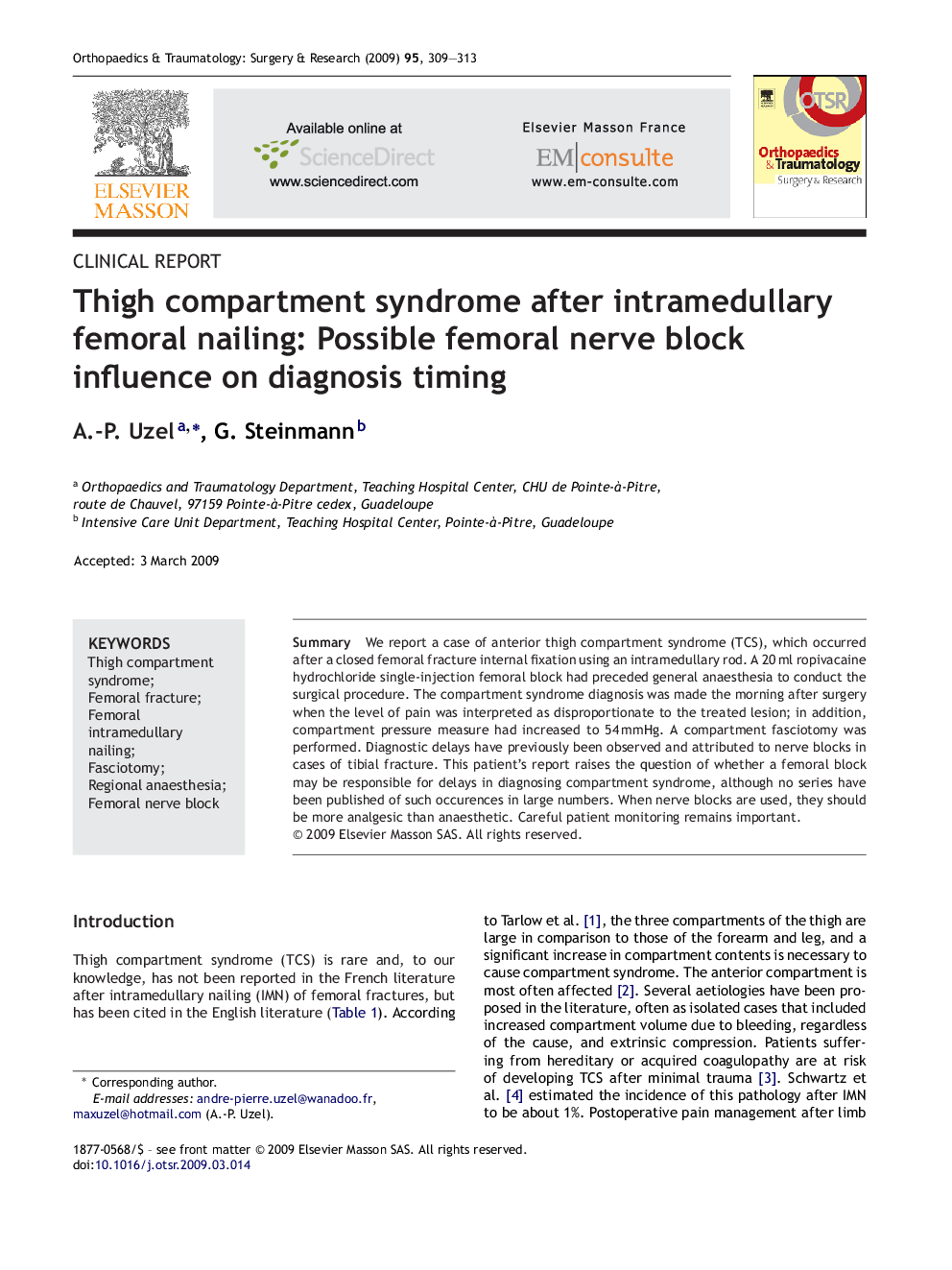| Article ID | Journal | Published Year | Pages | File Type |
|---|---|---|---|---|
| 4082625 | Orthopaedics & Traumatology: Surgery & Research | 2009 | 5 Pages |
SummaryWe report a case of anterior thigh compartment syndrome (TCS), which occurred after a closed femoral fracture internal fixation using an intramedullary rod. A 20 ml ropivacaine hydrochloride single-injection femoral block had preceded general anaesthesia to conduct the surgical procedure. The compartment syndrome diagnosis was made the morning after surgery when the level of pain was interpreted as disproportionate to the treated lesion; in addition, compartment pressure measure had increased to 54 mmHg. A compartment fasciotomy was performed. Diagnostic delays have previously been observed and attributed to nerve blocks in cases of tibial fracture. This patient's report raises the question of whether a femoral block may be responsible for delays in diagnosing compartment syndrome, although no series have been published of such occurences in large numbers. When nerve blocks are used, they should be more analgesic than anaesthetic. Careful patient monitoring remains important.
